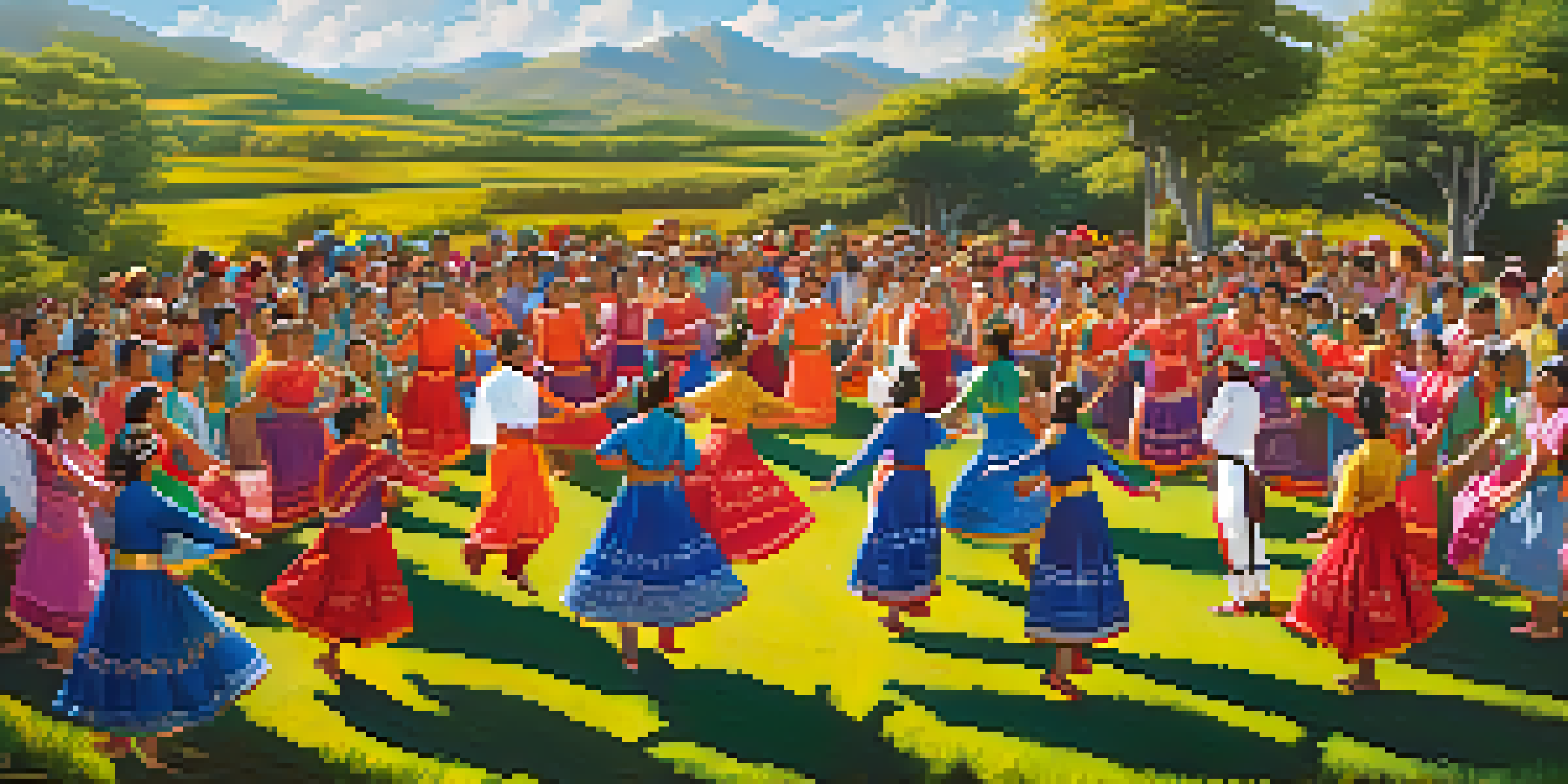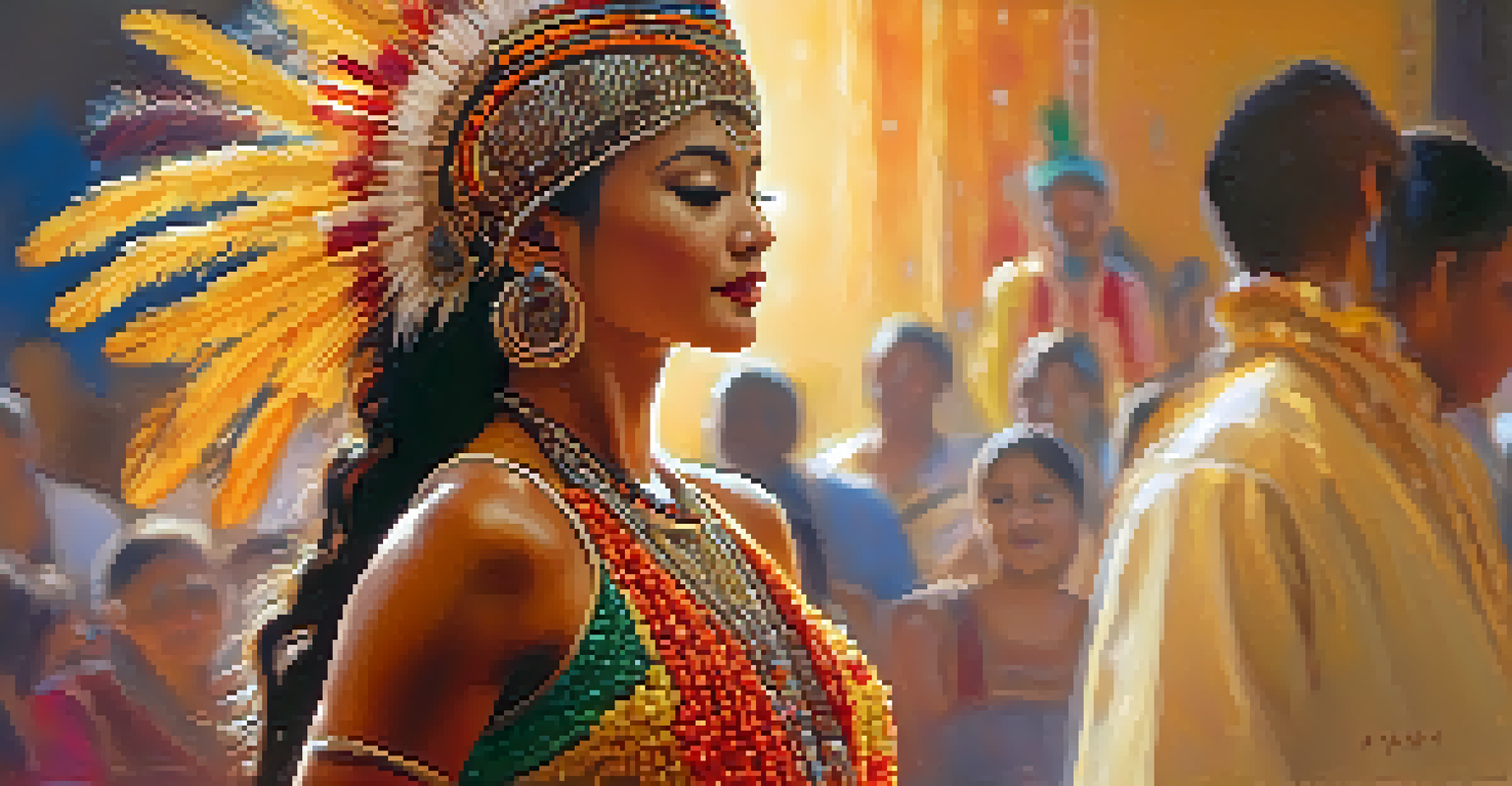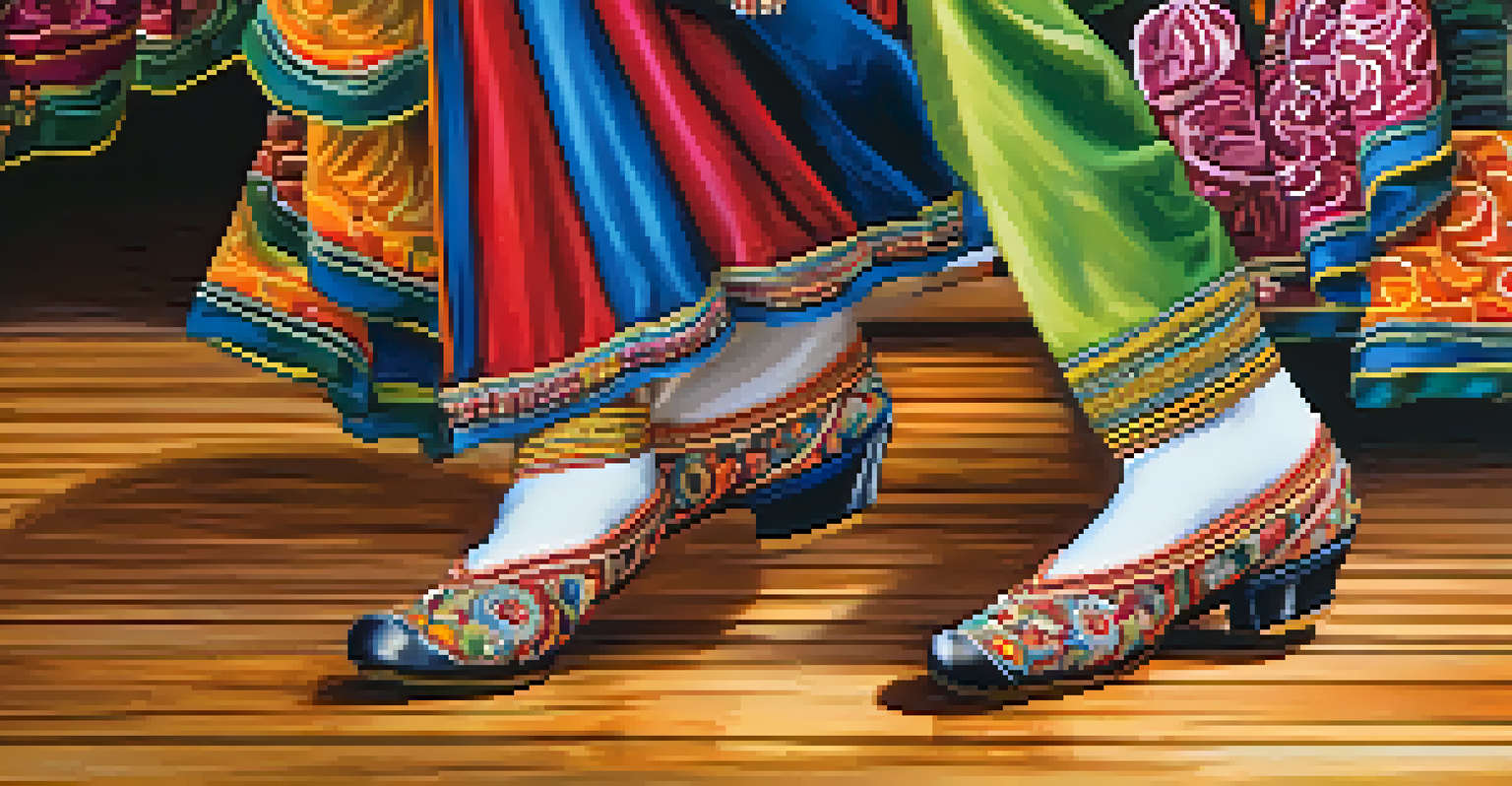Ritualistic Dance and Its Role in Cultural Identity Formation

What is Ritualistic Dance and Its Significance?
Ritualistic dance is a form of movement that is often tied to cultural traditions and ceremonies. These dances serve not just as entertainment but as a vital channel for expressing beliefs, values, and communal stories. They are often characterized by specific movements, costumes, and music that resonate deeply within a culture's history.
Dance is the hidden language of the soul.
For many cultures, these dances are performed during significant events such as weddings, harvests, or religious ceremonies. They encapsulate the essence of community, bringing people together in shared experience and reinforcing social bonds. The rhythmic movements and symbolic gestures can evoke emotions, bridging the gap between generations.
Moreover, ritualistic dance can also be a vehicle for cultural preservation. In a world that is increasingly globalized, these dances keep traditional practices alive, allowing younger generations to connect with their heritage. By participating in these dances, individuals affirm their identity and place within the cultural tapestry.
Cultural Identity and Its Formation Process
Cultural identity is shaped by a variety of factors, including language, customs, and shared experiences. It is a dynamic concept, evolving as communities interact with different cultures and ideas. Ritualistic dance plays a crucial role in this formation, acting as a living expression of identity that is constantly refreshed and reinterpreted.

As people engage in ritualistic dances, they not only learn about their own culture but also about others, fostering a sense of understanding and respect. This interaction is vital in multicultural societies, where the blending of traditions can lead to new forms of cultural expression. Dance becomes a dialogue, conveying what words sometimes cannot.
Ritualistic Dance and Cultural Identity
Ritualistic dance plays a vital role in shaping and expressing cultural identity, fostering connections between individuals and their heritage.
Furthermore, these dances often reflect the challenges and triumphs faced by a community, encapsulating their history in movement. When individuals participate in these rituals, they reaffirm their connections to their ancestors and their shared past, reinforcing a collective identity that transcends individual experiences.
The Emotional Power of Dance in Cultural Rituals
Ritualistic dance has a unique ability to evoke emotions that can unite or heal a community. The movements, accompanied by music and rhythm, can transport participants into a state of collective consciousness, where personal and shared feelings intertwine. This emotional connection is often what makes these dances so powerful and memorable.
Ritual is the way we make sense of our world – it expresses our beliefs, values, and aspirations.
For instance, during a mourning ritual, the dance may express grief and loss, allowing participants to process their emotions in a supportive environment. Similarly, celebratory dances can evoke joy and pride, reinforcing a sense of belonging among community members. These emotional experiences are pivotal in solidifying cultural identity.
Moreover, the shared practice of dance fosters empathy and understanding within a community. When people witness or partake in these rituals, they become part of a larger story, one that transcends individual experiences. This collective emotional journey strengthens cultural ties and nurtures a sense of identity that can withstand the test of time.
Ritualistic Dance as a Tool for Social Cohesion
Social cohesion is essential for the stability of any community, and ritualistic dance plays a significant role in fostering this unity. By participating in group dances, individuals not only express their identity but also create bonds with others, reinforcing shared values and mutual respect. This sense of belonging is crucial in today's rapidly changing world.
In many cultures, dances are performed in a circle, symbolizing equality and inclusivity. This physical formation encourages interaction and connection among participants, breaking down barriers and promoting harmony. As people dance together, they engage in a shared experience that fosters trust and cooperation.
Dance as a Tool for Social Cohesion
Participating in ritualistic dance promotes social cohesion, creating bonds among community members and reinforcing shared values.
Additionally, these dances can serve as a form of resistance against external pressures that seek to dilute cultural identity. By celebrating their traditions through dance, communities assert their existence and importance in a globalized society. This act of preservation not only strengthens internal cohesion but also invites others to appreciate and respect cultural differences.
The Role of Ritualistic Dance in Education
Ritualistic dance can also be an educational tool, teaching both young and old about cultural values, history, and social norms. Dance workshops and performances often serve as immersive learning experiences, where participants engage with their culture in a hands-on manner. This form of learning can be particularly impactful, as it combines physical movement with storytelling.
In educational settings, integrating dance into the curriculum can enhance students' understanding of their heritage. Through practice, students learn the significance of specific movements and songs, allowing them to internalize cultural narratives in a fun and engaging way. This experiential learning encourages a deeper connection to their cultural roots.
Moreover, these educational practices can promote cultural exchange, as students from diverse backgrounds come together to learn different dances. This not only enriches their understanding of various cultures but also fosters respect and appreciation for diversity. By learning about each other's traditions, participants build bridges that connect communities.
Ritualistic Dance in Modern Contexts
In the modern world, ritualistic dance continues to evolve while maintaining its core significance. Contemporary interpretations often blend traditional movements with modern influences, creating a dynamic dialogue between the past and the present. This evolution allows cultural identities to remain relevant in an ever-changing society.
For example, many indigenous communities now incorporate contemporary music or styles into their traditional dances, attracting younger participants and ensuring the practice's survival. By adapting to new contexts while honoring their roots, these dances serve as both a celebration of identity and a means of cultural exchange.
Modern Evolution of Dance Traditions
Ritualistic dance continues to evolve in modern contexts, blending traditional movements with contemporary influences to remain relevant.
Furthermore, modern technology has facilitated the sharing of these dances across the globe. Social media platforms enable communities to showcase their rituals, inviting wider audiences to appreciate their cultural significance. This visibility not only strengthens cultural pride but also encourages a global conversation about identity and heritage.
Celebrating Cultural Diversity Through Dance
Ritualistic dance serves as a vibrant celebration of cultural diversity, showcasing the rich tapestry of human expression across the globe. Each dance tells a story, reflecting the unique history, traditions, and values of a community. By embracing these diverse practices, we foster an appreciation for the myriad ways people connect with their cultural identities.
Cultural festivals often highlight various ritualistic dances, offering audiences a chance to experience different traditions firsthand. These events create a platform for cultural exchange, allowing people to learn and engage with customs that may be unfamiliar to them. Such interactions can break down stereotypes and promote mutual understanding.

Moreover, celebrating dance as a cultural expression can inspire individuals to explore their own heritage. When people witness the beauty and significance of another culture's dance, it often prompts a desire to learn more about their own traditions. This cycle of exploration and appreciation enriches the broader cultural landscape, making it a more inclusive and harmonious space.